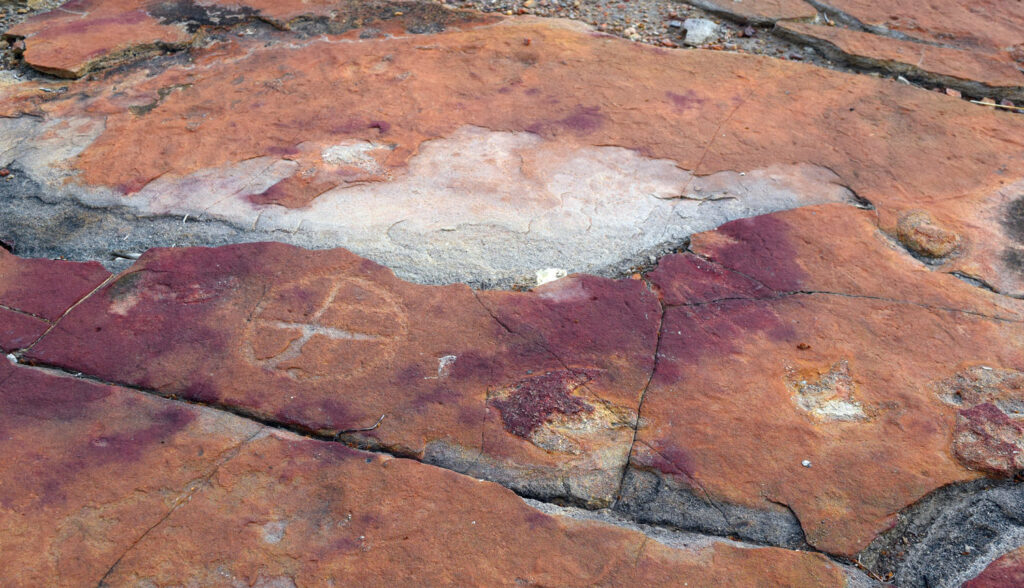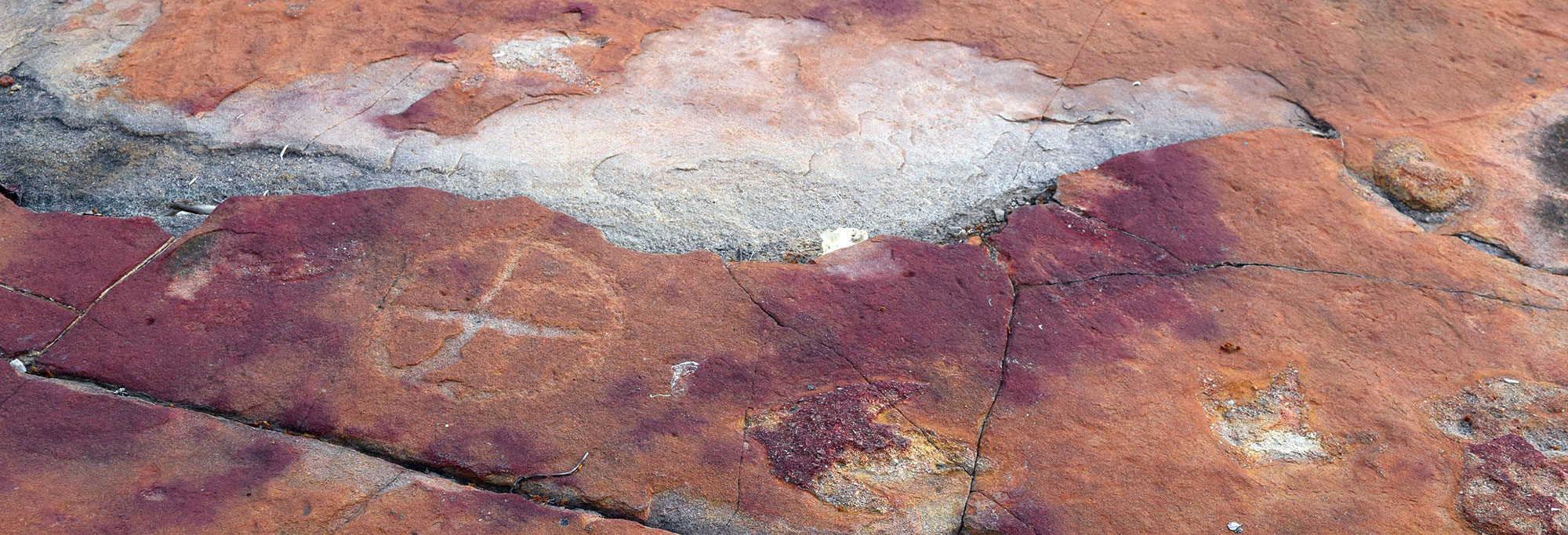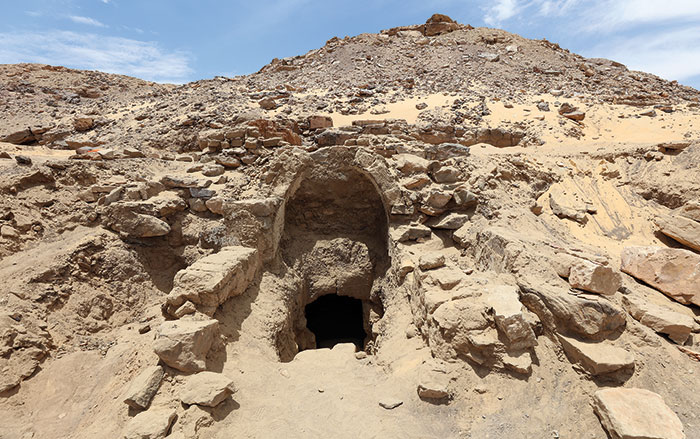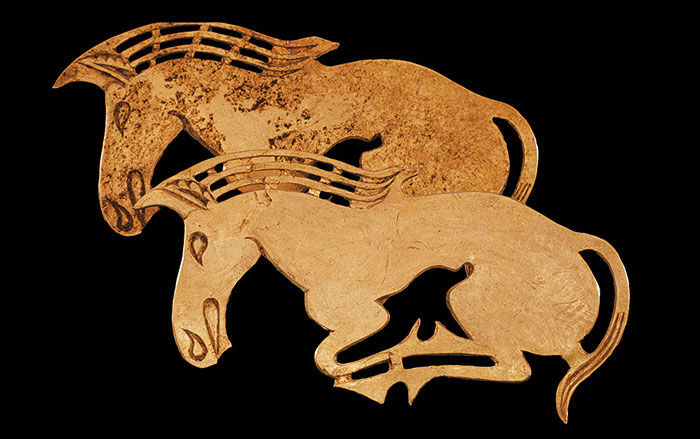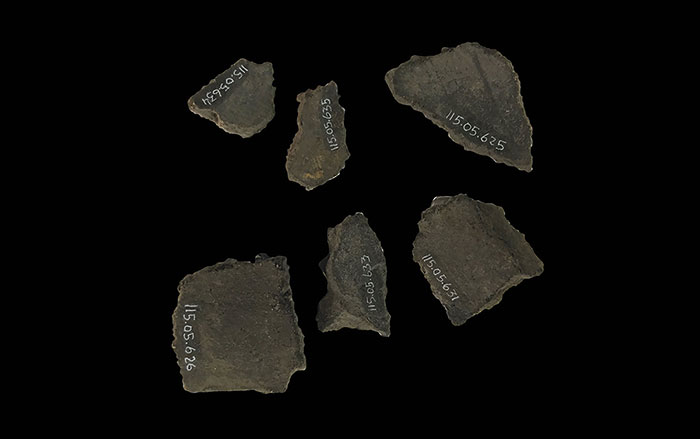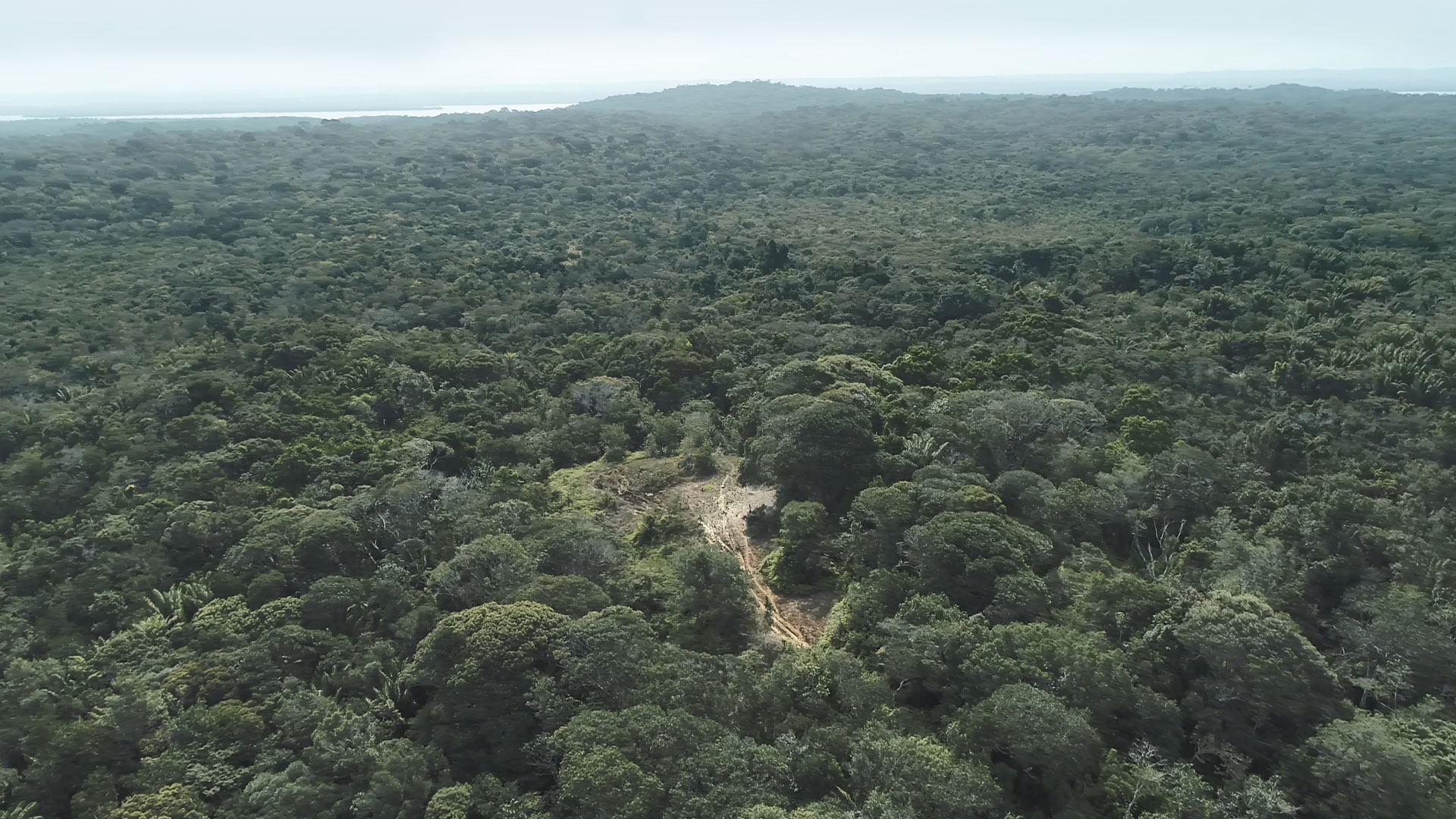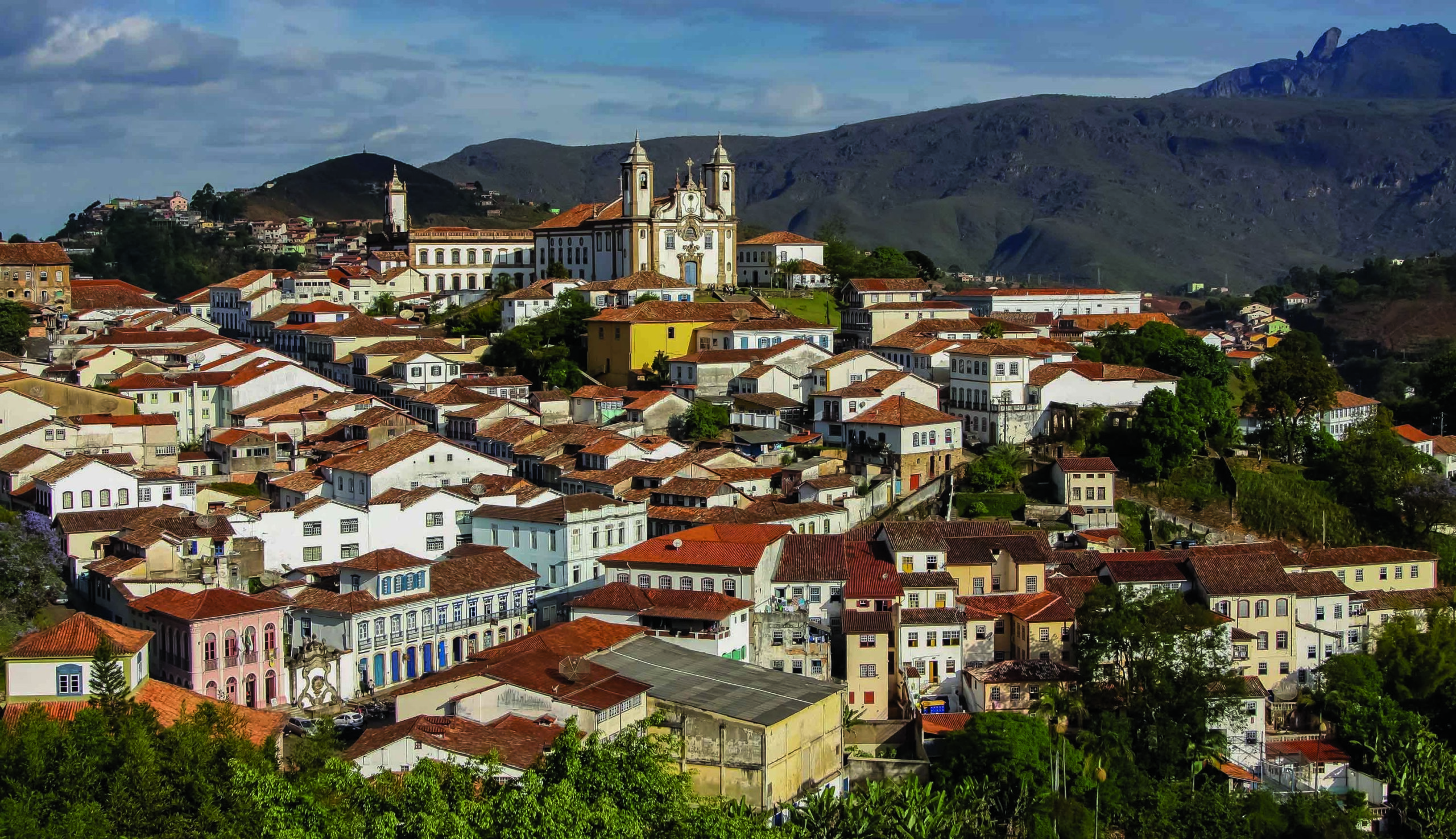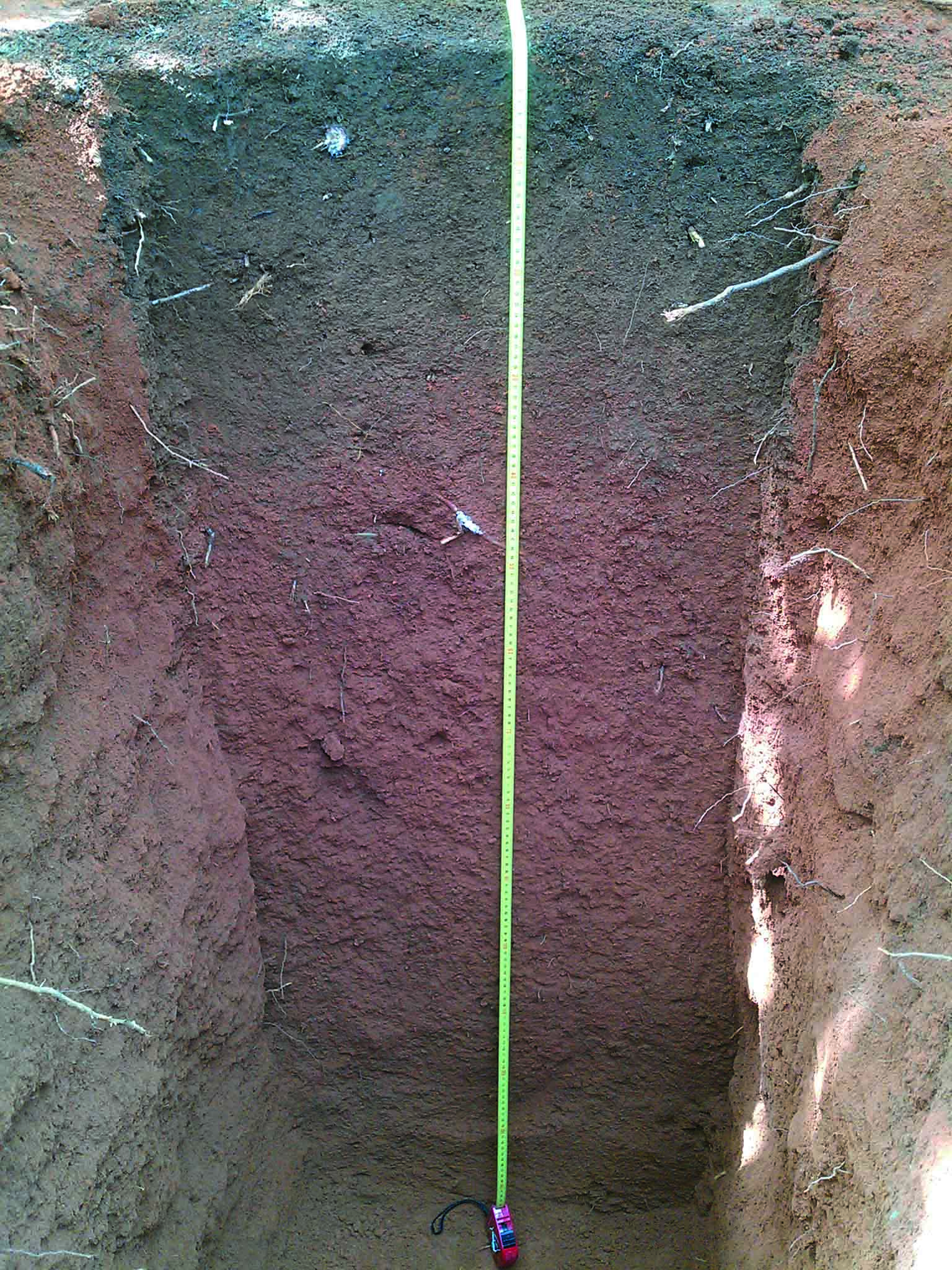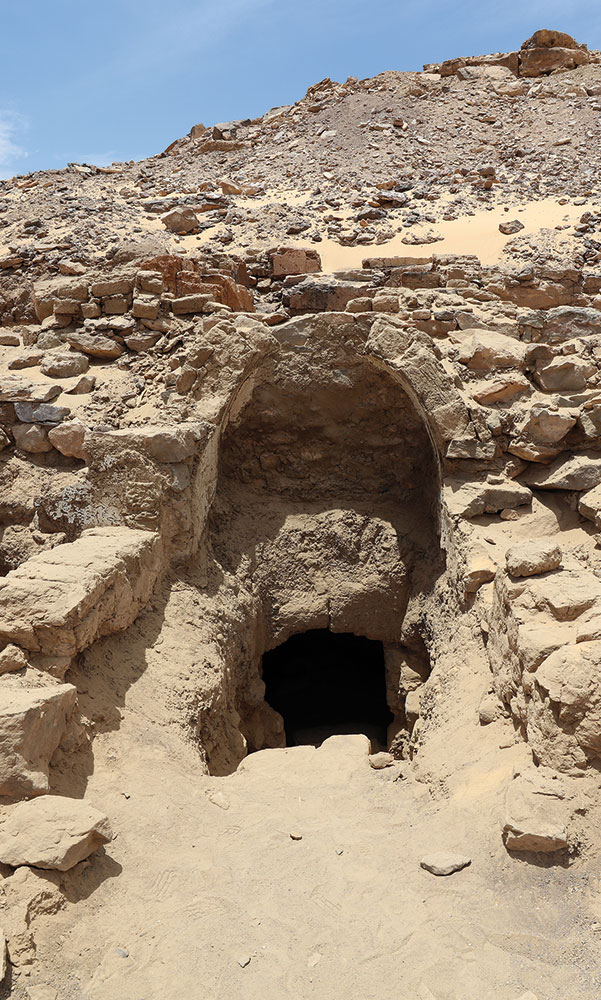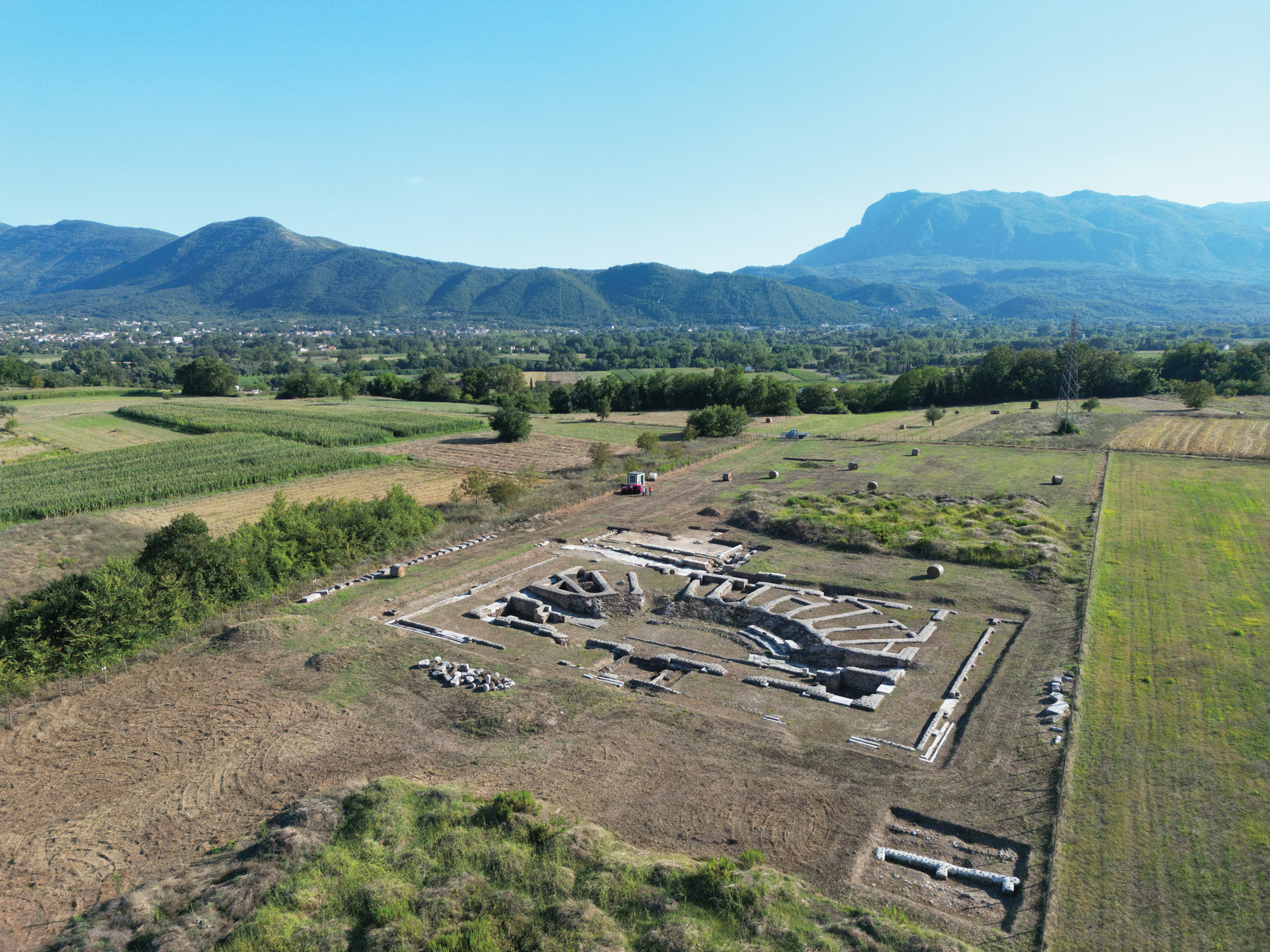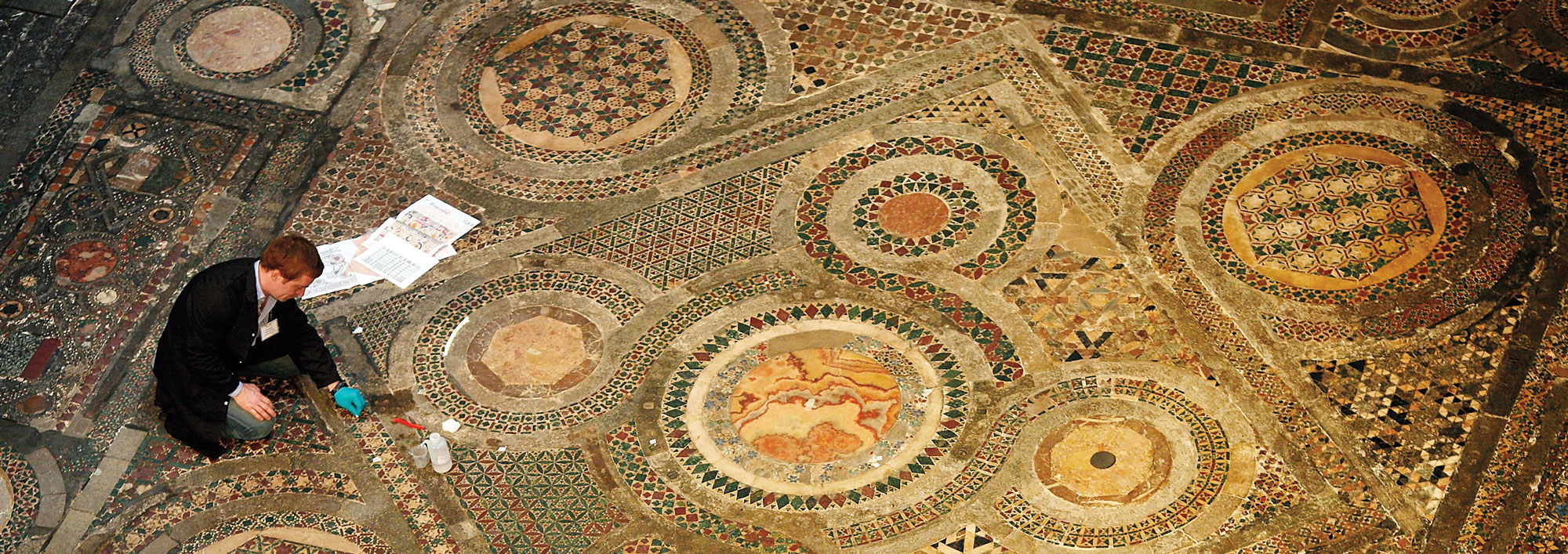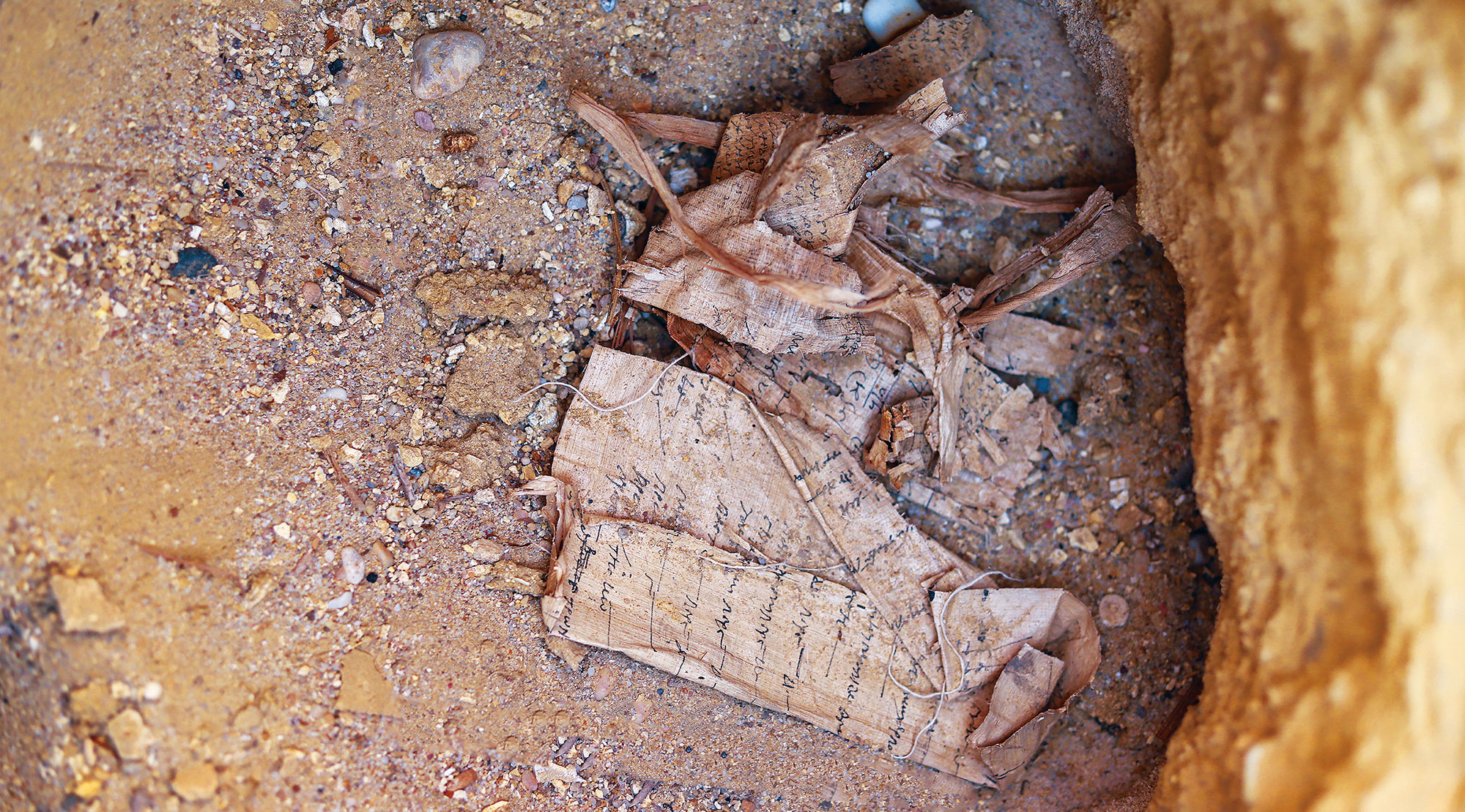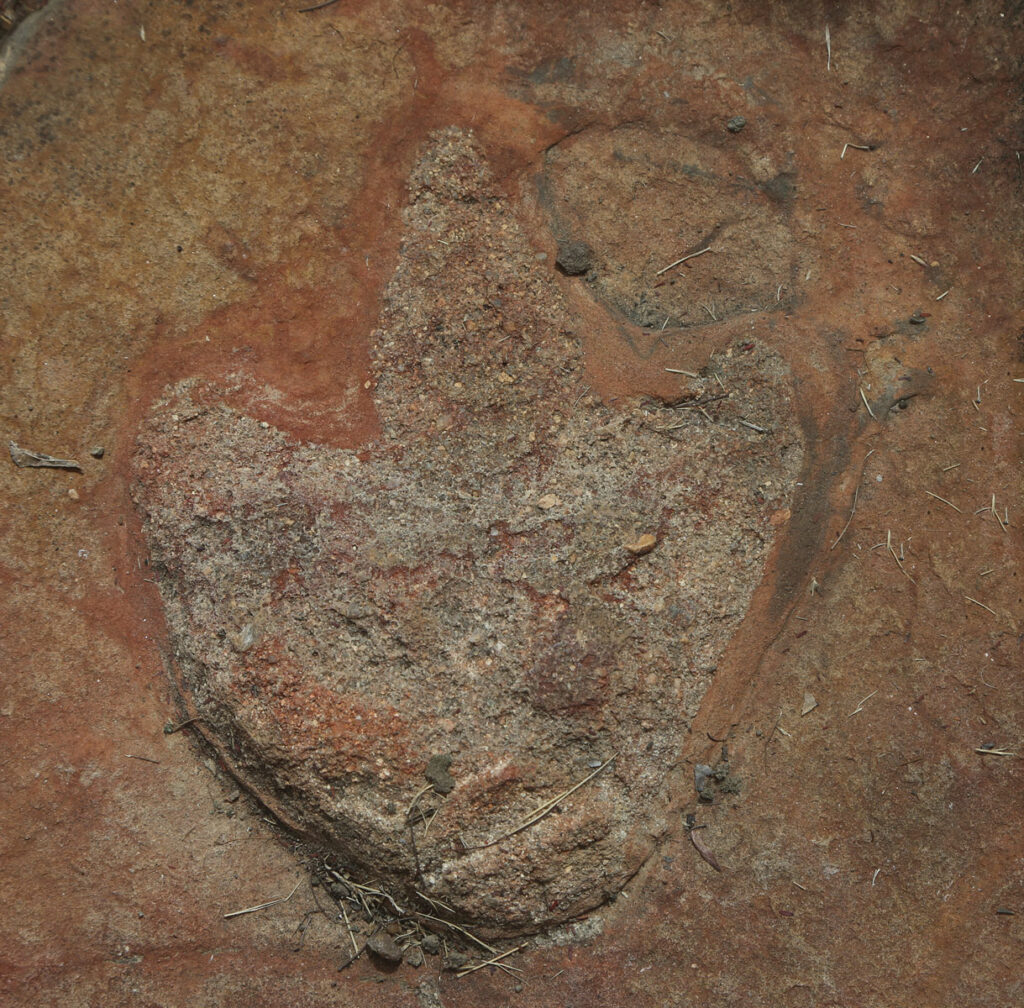
Some 140 million years ago, during the Early Cretaceous period, dinosaurs roamed northeastern Brazil, leaving behind fossilized footprints that give the area its popular name—Dinosaur Valley. Local residents and researchers have known about the tracks of theropod, sauropod, and iguanodontian dinosaurs at the site of Serrote do Letreiro for at least a century. Until now, however, scholars have paid little attention to petroglyphs with geometric designs that ancient artists incised into the same sandstone outcrops between 9,000 and 3,000 years ago. In some cases, the designs are mere inches from the dinosaur tracks. Using traditional field survey methods as well as drone photography, an interdisciplinary team of archaeologists and paleontologists, led by archaeologist Leonardo Troiano of the National Center for Archaeology at Brazil’s National Historic and Artistic Heritage Institute, identified and documented more than 50 such petroglyphs across a 16,000-square-foot area.
The petroglyphs, which range from less than an inch to more than a foot in diameter, include circles divided by perpendicular lines, shapes resembling stars and snake-like curves, and distinctive three-toed impressions that look like animal footprints. Similar motifs have been found in at least 150 other rock art sites throughout northeastern Brazil, though none appear in proximity to dinosaur tracks. This suggests, Troiano says, that the prehistoric people who created art throughout the region shared ways of expressing themselves. “We know these societies basically just from their rock art record,” he says. “They were moving around, so we can infer that they were probably hunter-gatherers.”
Although the meaning of the designs remains opaque, Troiano believes that their placement wasn’t random. “This site is very important because there is material evidence that proves Indigenous people were aware of the paleontological record, and that it meant something to them,” he says. “It was important enough for them to place their symbolic visual code right beside these dinosaur footprints.”
